
Customer Spotlight

"Nomic Atlas can be applied across a broad spectrum of applications, reducing development timeframes and facilitating exploratory and interactive analysis for non-technical stakeholders responsible for interpreting the results and making strategic and operational decisions."
NECSTouR, based in Brussels, is a network of European regional tourism authorities that promotes competitive and sustainable tourism through interregional projects and cooperation. With over 40 members and 30 associated members, it addresses tourism challenges by sharing best practices and solutions. The Tourism of Tomorrow Lab, a specialized department within NECSTouR, provides tailored consultancy services focused on data-driven research, analysis, and destination management. These services aim to improve the resilience, competitiveness, and sustainability of tourism destinations.
The analysis of tourists' or clients' opinions of a destination's various tourist services and products is a crucial source of information for the diverse stakeholders responsible for managing the destinations or tourist companies. Identifying the main attributes and topics within these opinions helps to identify strengths or areas for improvement.
These opinions are obtained in various ways, including surveys carried out by tourist destinations or establishments and online reviews on portals, web platforms, forums, blogs, or social media channels. However, analyzing this data requires a specific level of technical complexity not typically available within the management personnel of destinations, tourism-related enterprises, or decision-making bodies. This often leads to lengthy analysis times and hinders the scalability of services.
By adopting Nomic Atlas, NECSTouR's Tourism of Tomorrow Lab significantly enhanced its productivity. A large portion of the natural language processing (NLP) analysis procedure was streamlined, with certain preprocessing tasks of the opinion texts retained. The user-friendly nature of the tool reduced the time required to present analysis results to tourism managers in an easy-to-interpret format. In some cases, even non-technical users could directly upload data and conduct the analysis without requiring extensive technical expertise.
To illustrate the application of Nomic Atlas, NECSTouR analyzed a dataset of 515K hotel reviews in Europe, published on Kaggle. This dataset comprises customer reviews and ratings of 1493 luxury hotels across Europe. For this use case, only the negative reviews were analyzed to identify the worst-valued attributes.
Figure: Nomic Atlas map of +500K negative customer reviews for +1500 hotels in Europe. The map can also be found here.
Through this topic map, hotel managers can discover the most common causes of the negative opinions that luxury hotel customers express on platforms such as Booking.com.
Nomic Atlas's interactive map retains semantic associations between terms and establishes hierarchical disaggregation between attributes, offering a comprehensive and holistic perspective that facilitates the identification of relationships to develop more specific corrective measures.
For example, the topic "Restaurant" emerges as a high-level topic from the map, revealing an attribute that has materialized as a consequence of unfavorable opinions.
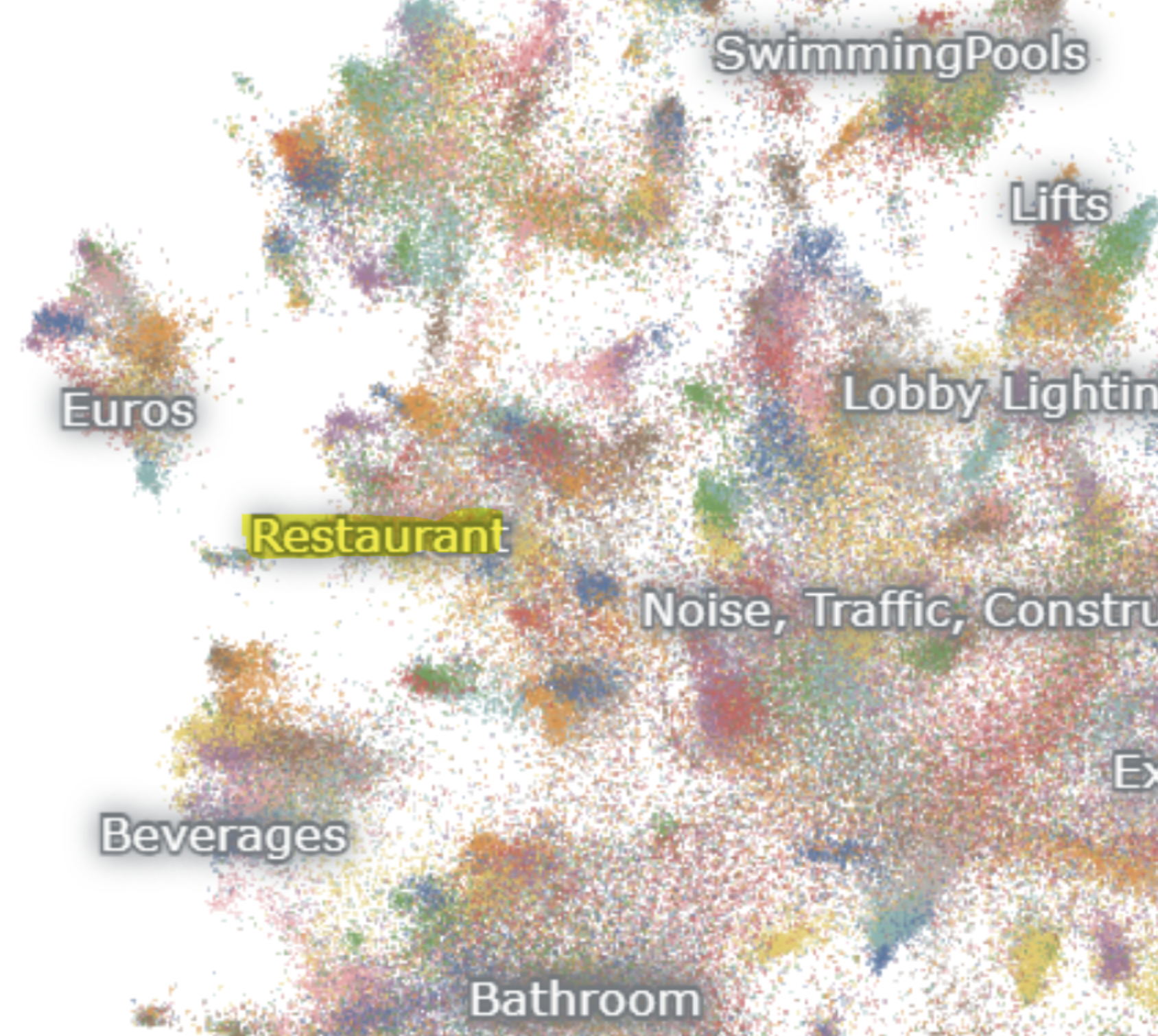
Figure: High-level topic "Restaurant" revealing an improvement area.
Zooming in on the "Restaurant" topic reveals more low-level topics such as "Expensive Restaurants," "Service Speed," "Rooftop Bar," and "Mini Bar." At this zoom level, the subjects undergo a process of disaggregation, revealing additional attributes that contribute to a more comprehensive understanding of the issue.
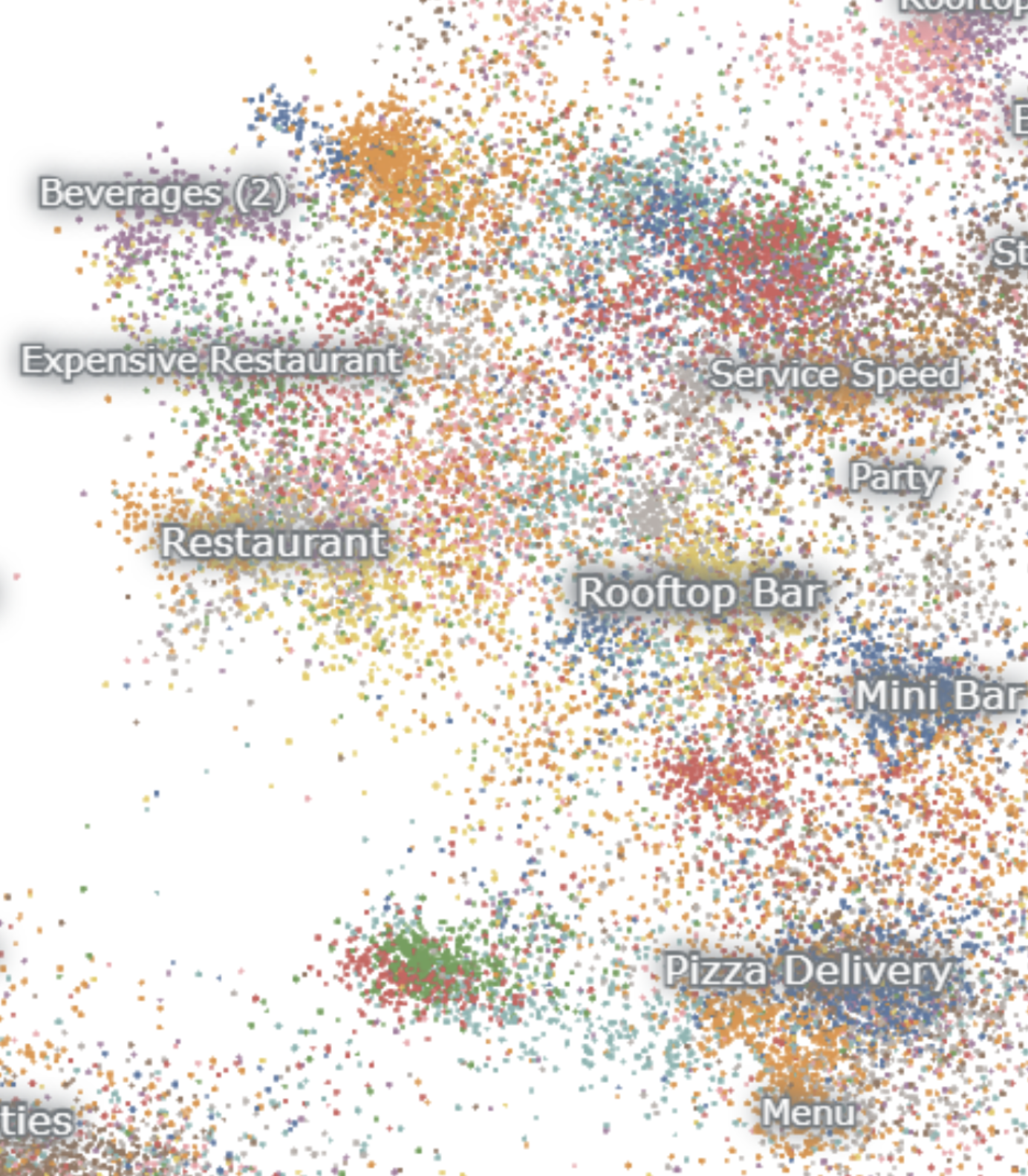
Figure: Zooming on the "Restaurant" topic reveals more low-level topics such as "Expensive Restaurants," "Service Speed," "Rooftop Bar," and "Mini Bar."
Additionally, focusing on individual comments allows for the identification of granular details.
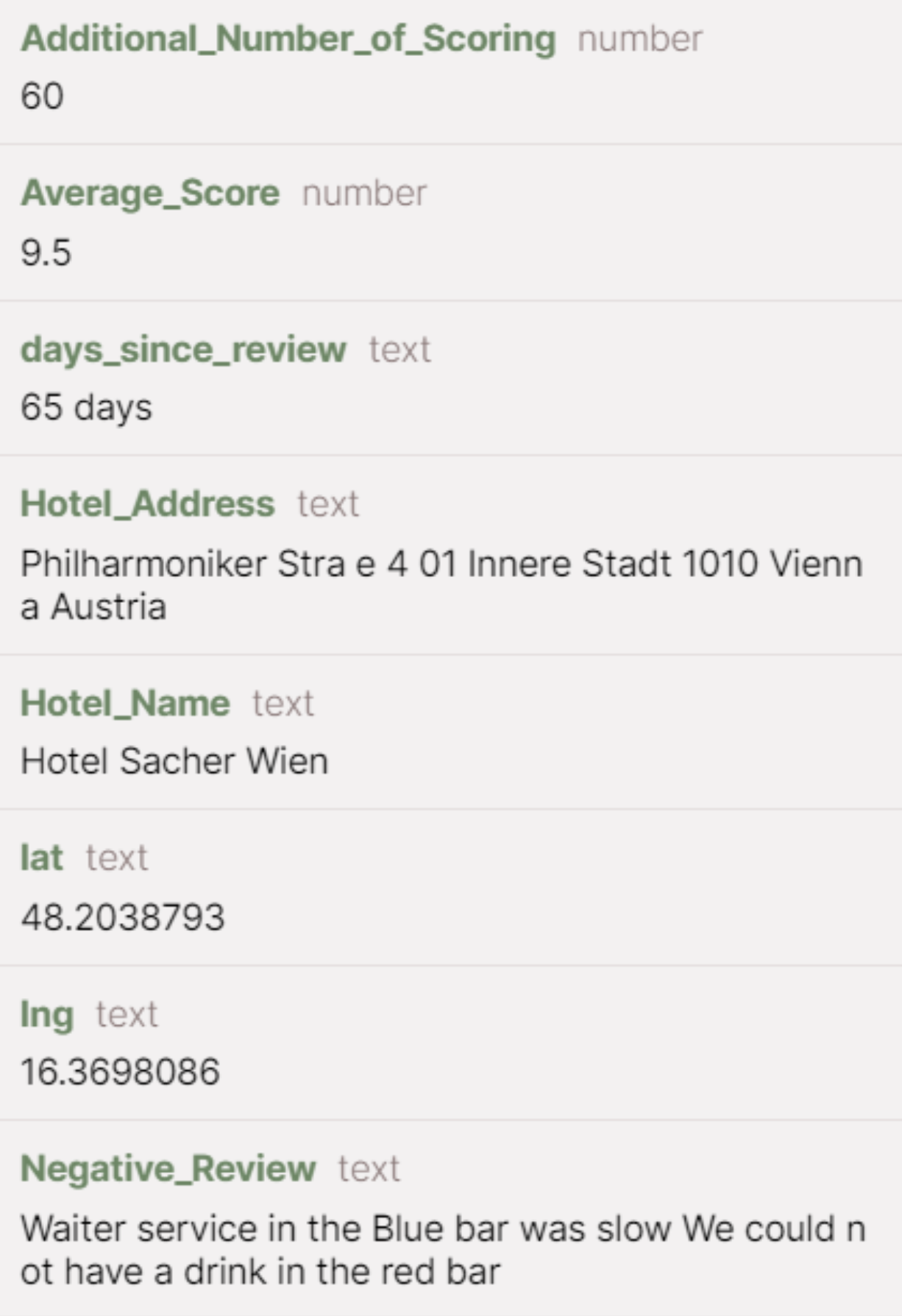
Figure: Individual review highlighting the slow service received in the Bar.
By applying the same analysis to the topic "SwimmingPools," it is possible to observe areas for improvement in more specific aspects.
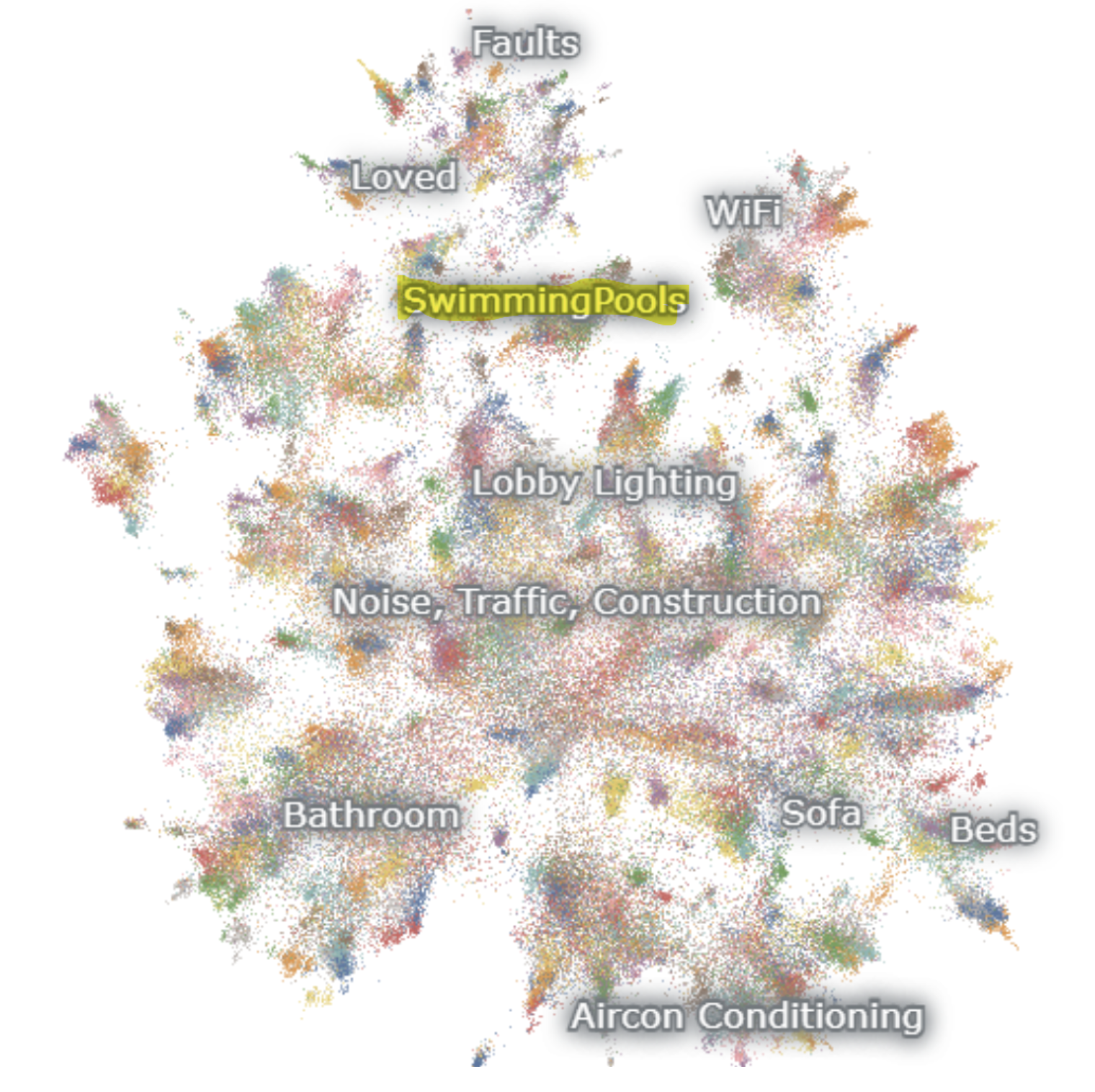
Figure: High-level topic "SwimmingPools" revealing an improvement area.
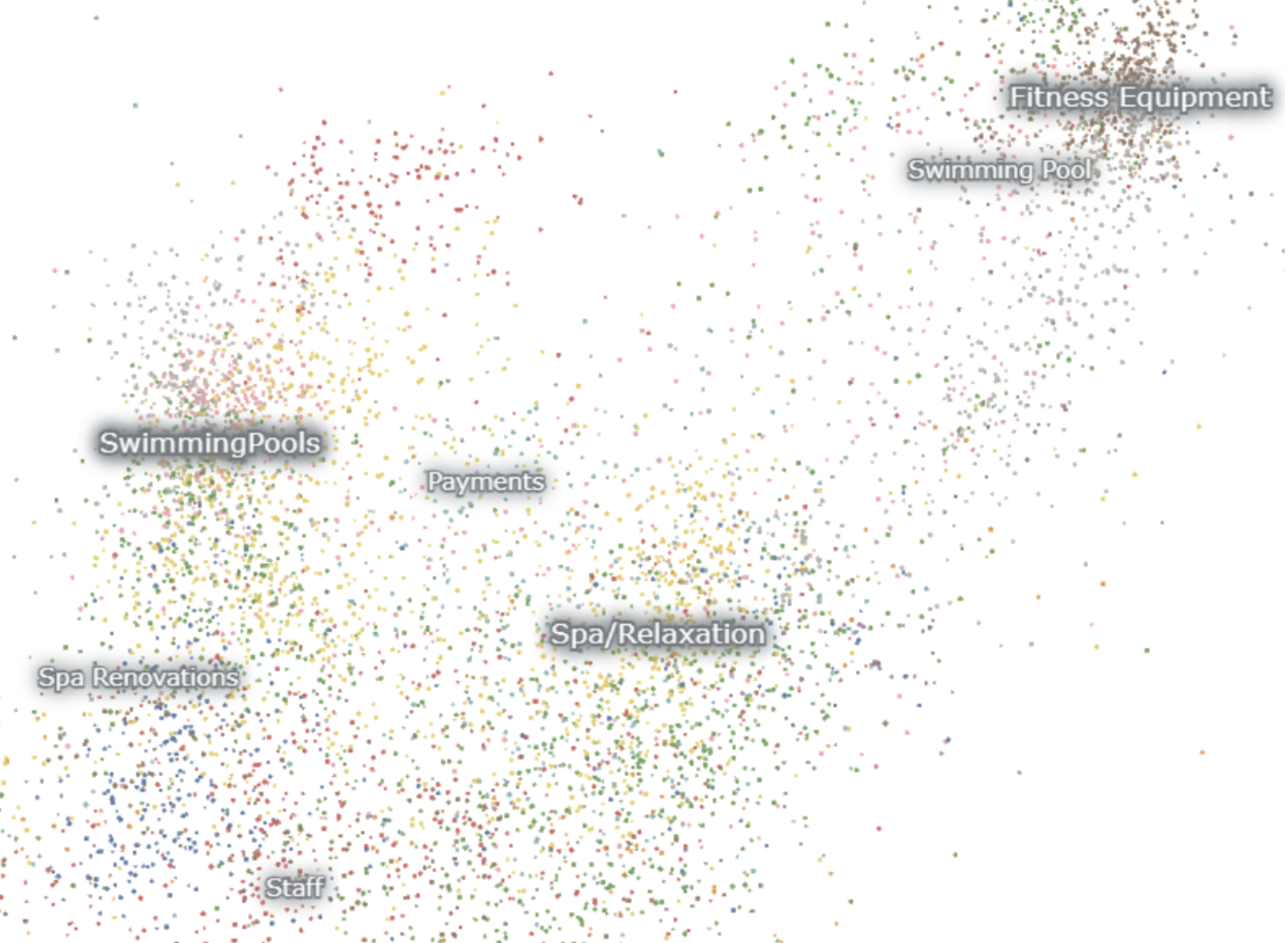
Figure: By delving deeper into the "SwimmingPools" topic, more specific subtopics such as "Spa renovations," "Fitness Equipment," "Payments," and "Staff" become evident.
The online graphical user interface offered by Nomic Atlas includes various features such as filtering, searching, labeling, and more. For instance, adjusting the view settings can produce a colormap using the "Reviewer_score" data field, helping to identify areas that receive lower scores.
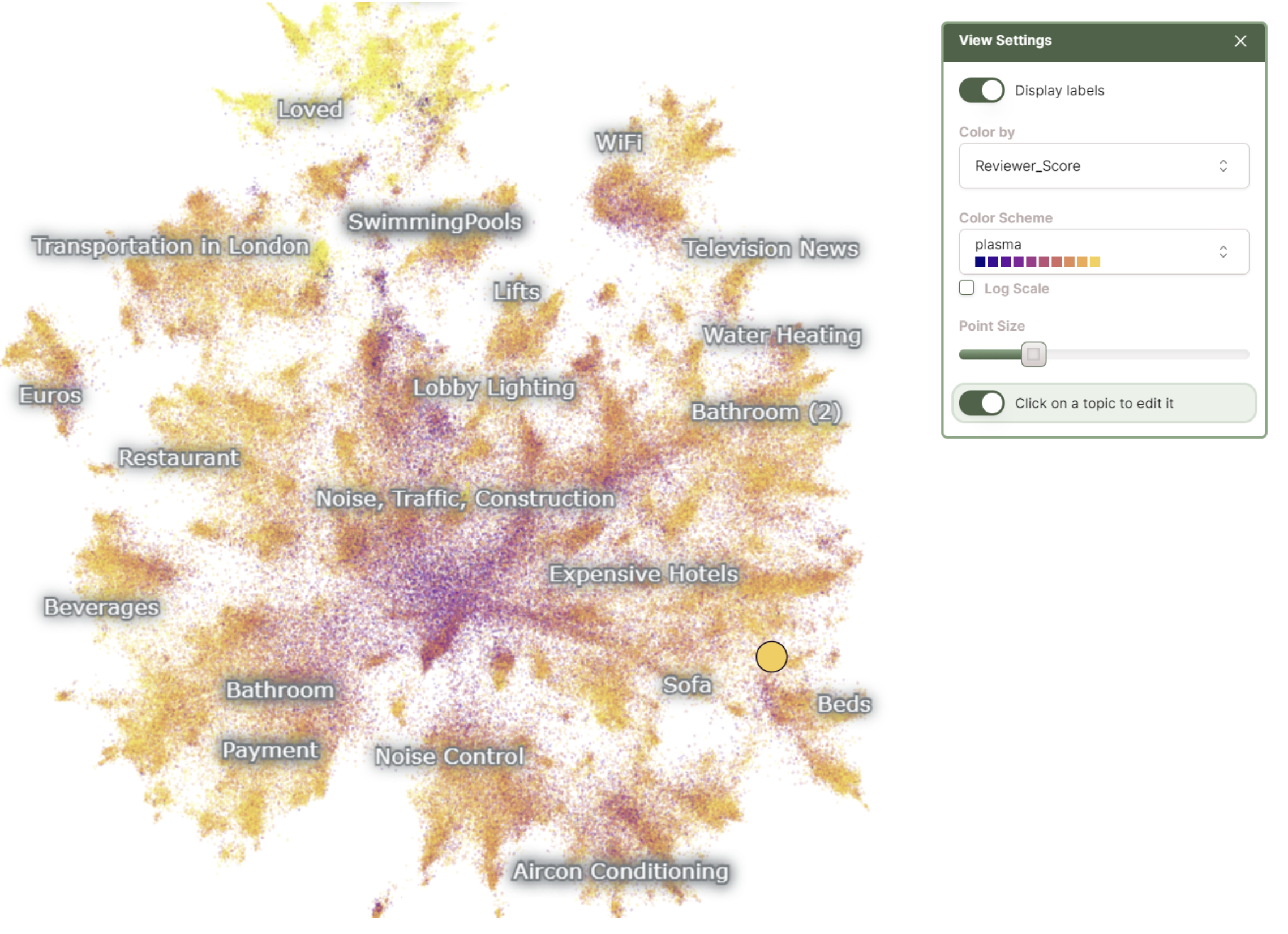
Figure: Utilizing color-coding in the topic map to discern the concentration of lower reviewer scores in the central region.
Another interesting analysis involves comparing topic maps obtained by filtering the reviewers' nationalities. This comparison can reveal substantial differences depending on the reviewer's nationality.

Figure: Nomic Atlas filtering functionality available through the web interface.
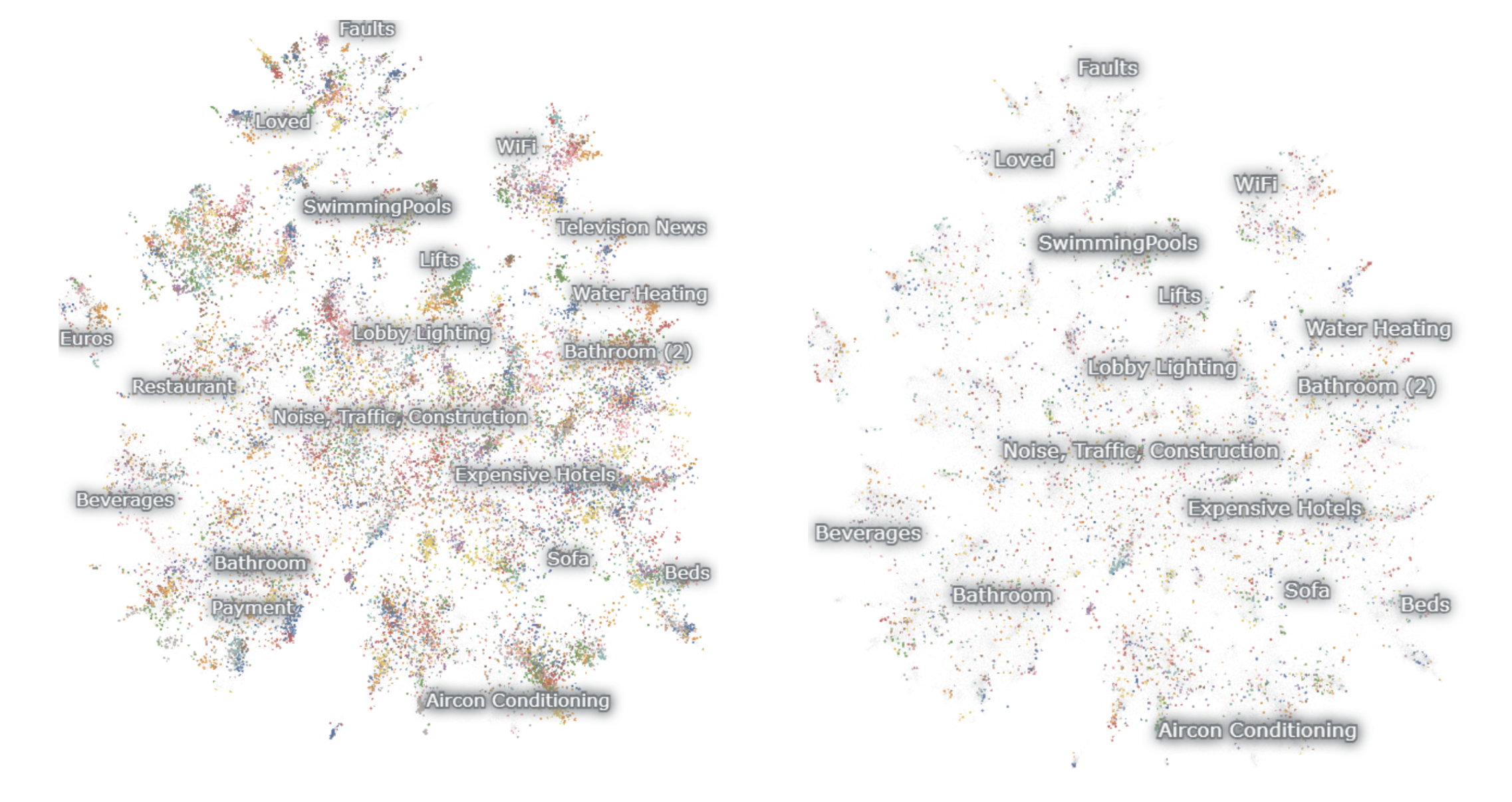
Figure: Benchmark of the two topics model for different reviewers’ nationalities (left: Unites States, right: France).
The analysis capabilities of Nomic Atlas can be applied to various other domains. For example, hotel or real estate investment organizations can optimize their value by understanding which attributes prospective clients of their hotel complexes seek most. Additionally, the tourism industry can benefit from monitoring local residents' perspectives on tourism's effects on their communities, enabling more effective mitigation strategies.
Nomic Atlas enables straightforward analysis of opinions expressed by tourists or clients of tourism-related services. This capability can be applied across a broad spectrum of applications, reducing development timeframes and facilitating exploratory and interactive analysis for non-technical stakeholders responsible for interpreting the results and making strategic and operational decisions.